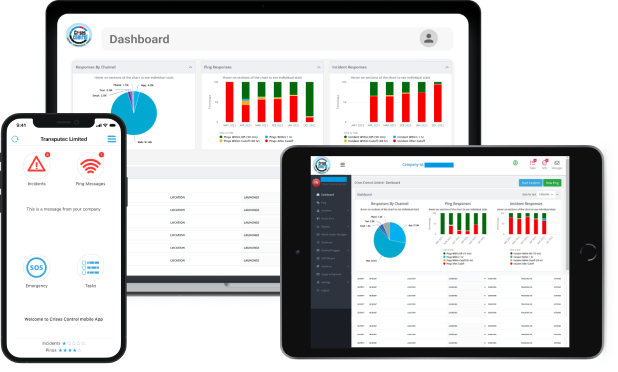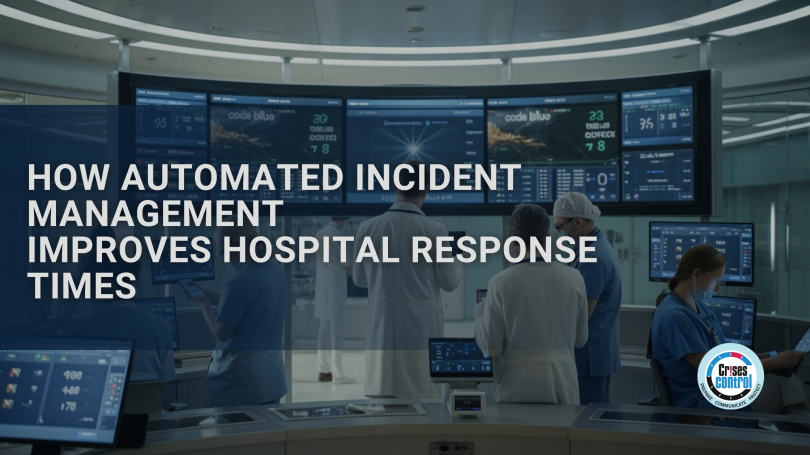Written by Asipe Nokenke | Marketing Assistant
Mass Notification Software is revolutionising hospital emergency responses. At 2:37 a.m. in the cardiac ward, a patient in Room 412 stops breathing. A nurse hits the Code Blue button, and for a split second, the room is silent but not in the way it used to be. Instead of waiting for an overhead announcement and hoping the right people hear it, a chain reaction begins instantly. Within seconds, the nearest resuscitation team receives an alert on their mobiles, complete with location, patient ID, and assigned roles.
No one is left wondering who’s doing chest compressions or where the defibrillator is. No one wastes precious time running to the wrong floor. Every step is already in motion before the first responder even reaches the door.
This is automated incident management in action, and in healthcare, it can be the difference between life saved and life lost.
With Mass Notification Software for healthcare, hospitals can reduce response times during critical incidents such as Code Blue emergencies.
The Hidden Cost of Slow Hospital Communication
Hospitals are built to respond fast, but even the most experienced teams can be slowed down by one invisible threat: poor communication.
Ask any clinician, and they’ll tell you about the moments where:
- An urgent alert got stuck in a voicemail box.
- A winter storm stranded half the night shift without warning.
- A freezer failure in the blood bank went unnoticed until morning, costing thousands in wasted supplies.
It’s not that staff don’t care. It’s that manual processes, siloed systems, and human bottlenecks slow things down, right when speed matters most.
What Automation Changes
Mass Notification Software designed for healthcare doesn’t just “send messages.” It transforms how an incident unfolds.
Picture this:
A temperature sensor in the vaccine storage unit detects a drop below the safe range. The system doesn’t just trigger an alarm in a control room; it sends an instant, multi-channel alert to the facilities manager, on-call pharmacist, and hospital administrator. It includes instructions for transferring stock and a live checklist that updates as each step is completed.
The risk isn’t just spotted, it’s acted on, documented, and resolved before the loss becomes a crisis.
Real Scenarios That Show the Difference
Code Blue in Seconds, Not Minutes
In a cardiac arrest, every minute without CPR reduces survival by 10%. Automated real-time Code Blue alert systems for hospitals cut the delay between recognition and action to mere seconds, delivering precise instructions to the right responders instantly.
Weather Closures Without the Chaos
When a blizzard closes major roads, it’s not enough to post a notice on the hospital’s Facebook page. Effective healthcare staff notification for weather closures is essential to maintain hospital operations during unpredictable events. Healthcare staff notifications for weather closures need to reach everyone from on-call surgeons to the cleaning crew, wherever they are, in their own language if necessary.
Silent but Deadly: Cold Chain Failures
A hospital warehouse may store vaccines worth millions. A temperature monitoring alert system for healthcare warehouses can detect even minor deviations and push alertsMulti-Channel Alerts for Faster Crisis Communication instantly to maintenance and pharmacy teams, preventing irreversible loss.
The Chain Reaction of Good Communication
Automation doesn’t just speed up alerts; it coordinates the entire response. With a platform like Crises Control, that chain reaction looks like this:
- Detection: An incident is automatically recognised via integration with Hospital Information Systems, sensors, or a manual trigger.
- Notification: Alerts are sent instantly via SMS, voice, email, push, Microsoft Teams and app notifications, ensuring no one is missed.
- Task Assignment: Each responder knows exactly what to do, in what order.
- Tracking: Every action is logged for compliance and review.
- Resolution: Incidents are closed out faster, with full visibility for management.
Crises Control’s integrated emergency communication platform supports healthcare emergency communication and automated hospital incident management with task assignment
Why Hospitals Can’t Afford to Rely on Old Systems
In healthcare, “we’ve always done it this way” can be dangerous. Overhead paging, phone trees, and manual logging may feel familiar, but they:
- Depending on someone always being in the right place to hear an alert.
- Leave room for miscommunication between departments.
- Can’t confirm whether a message was received or acted on.
- Make post-incident audits painful and incomplete.
Automated, integrated emergency communication platforms for healthcare providers replace guesswork with certainty.
Meeting the World’s Toughest Compliance Standards
Healthcare isn’t just about saving lives; it’s about protecting data, following regulations, and proving you’ve done both.
Crises Control supports compliance across multiple regions:
- North America: HIPAA, Joint Commission, FDA regulations with encrypted messaging and audit-ready records.
- Europe: GDPR and national patient safety frameworks with secure, documented workflows.
- Middle East: Local health authority emergency protocols with multilingual, timezone-aware alerts.
Automation ensures compliance isn’t an afterthought; it’s built in.
From Crisis to Continuity
Emergencies don’t happen in isolation. A Code Blue might coincide with a cyberattack. A flood might knock out both power and IT systems. Without business continuity planning software for hospitals, even well-trained staff can be left scrambling.
With Crises Control, continuity plans are built into the same platform that sends alerts, meaning the handover from “incident response” to “business recovery” happens seamlessly.
Why This Matters More Than Ever
Healthcare is under more strain than ever, with staffing shortages, tighter budgets, growing compliance demands, and more extreme weather events.
The hospitals that will adapt best aren’t the ones with the most staff or the biggest budgets. They’re the ones with the fastest, clearest, most reliable communication under pressure.
That’s what automated incident management delivers. And it’s what patients, staff, and entire communities will increasingly depend on.
Conclusion
In hospitals, every second matters. Automated incident management doesn’t just improve speed, it builds reliability, coordination, and compliance into every response. By combining Mass Notification Software with real-time alerts, task assignment, and system integration, hospitals can protect patients, staff, and resources while meeting the highest standards of care.
Don’t wait for the next emergency to test your hospital’s readiness.
Book your free demo today to see how Crises Control can transform your response times and protect what matters most.
Request a FREE Demo

FAQs
